When you’re feeling under the weather, nothing soothes you more than a hot bowl of chicken noodle soup. When it’s cold and rainy outside, hot soup is especially satisfying! I was actually a bit sick this past week, but because we don’t live close to any Vietnamese restaurants anymore and I didn’t feel like cooking, we just went to Souplantation (also called Sweet Tomatoes in some places). They have, hands down, the best “American” chicken noodle soup ever. The broth is clear and rich, and you just feel healthier eating it! It’s funny because every time we go, all the Asians get bowls of just soup, while all the Caucasians get bowlfuls of just chicken and noodles. Mom always taught me the nutrients are all in the soup!
The Vietnamese version of chicken noodle soup, pho ga, is something that my family made quite often because of its humble ingredients that were always readily available. Pho ga is often overshadowed by it’s richer, more flavorful counterpart, pho bo (or just referred to as “pho“), beef noodle soup. On cold or rainy days though, nothing hits the spot more than a piping bowl of pho ga. Its flavors are a bit more subtle than pho bo, but I think that it has its own complexities and subtleties that don’t hit you over the head quite as much as eating a bowl of pho bo.
Pho ga is pretty simple to make, especially if you have the poached chicken technique down pat. I simply use the stock that was left over from making poached chicken and throw the bones back in after removing all the meat, along with some spices. Sometimes I add in another pound of chicken bones if I happen to have any (or you can always purchase chicken necks from Asian grocery stores too).
Pho Ga
serves 4-6
adapted from various sources
Try to purchase fresh banh pho noodles found in the refrigerated section of Asian supermarkets. If those are not available, the dried ones will do as well. We sometimes also use fresh noodle sheets, which can be found in sheets or pre-cut into 1/2″ strips (the same sheets and strips used for banh uotand beef chow fun). If not cut, simply use a knife to cut to the desired width.
Soup:
1 whole chicken (about 4 lbs)
1-2 lbs chicken bones (not necessary, but adds richness to the broth)
1 whole onion, unpeeled and cut in half
chunk of ginger, about 3″, unpeeled
2 Tbsp whole coriander seeds
4 whole cloves
2 whole star anise
1 1/2 Tbsp sugar (or rock sugar)
3 Tbsp fish sauce
small bunch of cilantro stems, tied
salt, to taste
1 pack banh pho (flat thin rick stick noodles)
Herb plate:
bean sprouts
cilantro
onions, thinly sliced
lime wedges
Vietnamese herbs such as Thai basil and culantro (sawtooth herb)
1. Toast the onion and ginger in the oven, with the temperature set to broil. Toast until the onion and ginger have a nice charred skin. This can take anywhere between 10-20 minutes. You can also toast them directly on your oven range, either with an electric or gas stove. Just be sure to watch them carefully, turn often, and have the exhaust fan on.
2. While the ginger and onion are toasting, you can also take the coriander seeds and lightly toast them in a pan until they are fragrant.
3. After the ginger and onion are cooled, rinse them under water and rub off all the skin. Use a peeler to peel off all the skin from the ginger. Cut the ginger into thick slices.
4. Before doing anything with the chicken or chicken bones, fill a pot with water to parboil the chicken. This helps get rid of all the impurities and ensures a clear broth. Heat water until it boils. Place chicken and chicken bones (if you are using any) into the pot and boil for about 5 minutes. Discard the water and rinse the chicken and chicken parts. Then poach the chicken according to the directions here, but subtract 5 minutes from the timing. Also place in the extra chicken bones. Add the ginger, onion, cilantro stems, coriander seeds, star anise, and cloves to the water as well. This will help flavor the broth and chicken while it cooks. Make sure there is enough water to entirely cover the chicken.
5. After you have removed the chicken and have cooled it in an ice bath, detach all the meat from the bones. Using a large butcher knife, break all the large bones to expose the marrow. Throw all the bones back into the pot.
6. Gently simmer for another 1-2 hours. Be sure not to let it boil too hard, or else the soup will become cloudy.
7. After 1-2 hours, strain the broth to remove all the bone shards. Add in the sugar and fish sauce. Add salt to taste.
8. Prepare noodles according to direction on package. If using fresh noodles, they shouldn’t need to be cooked for more than 1-2 minutes. You will want to err on the side of the noodles being more firm, because they will continue to cook as they sit in the broth. Our family also likes to use flat noodle sheets, as these are sometimes available fresh (and still warm!). They are oftentimes wider and have a smoother texture to them.
9. Prepare the bowls by placing noodles and shredded chicken pieces into a bowl. Ladle in the hot broth. Top with onions and cilantro.
10. Serve with herb plate and Sriracha and Hoisin sauce, if desired. I try to stay away from these sauces, as they tend to overpower the delicate flavor of the broth.

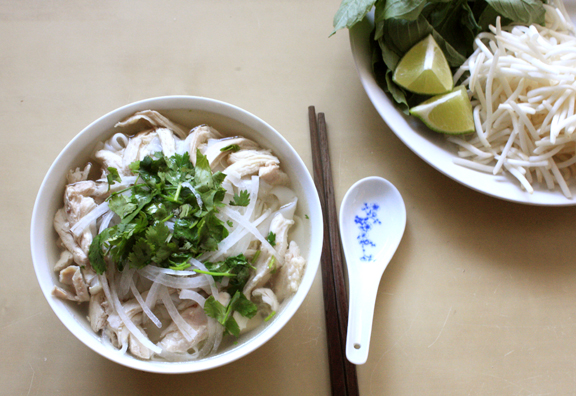
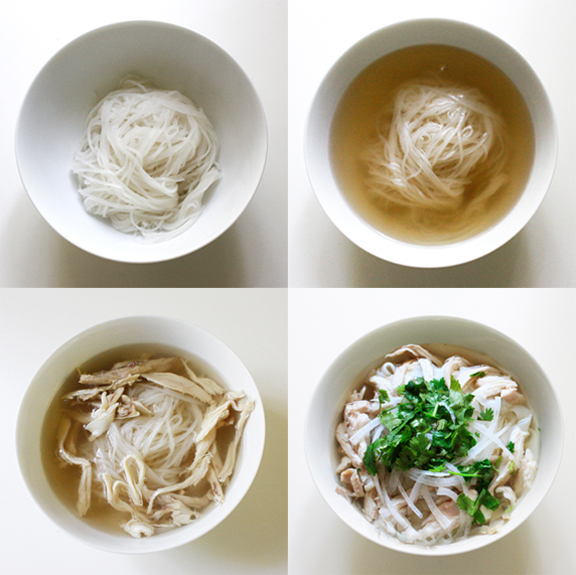

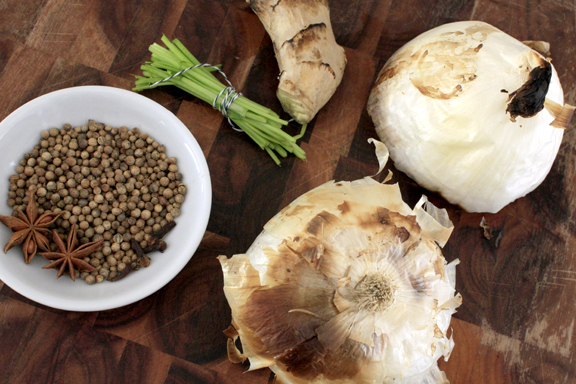




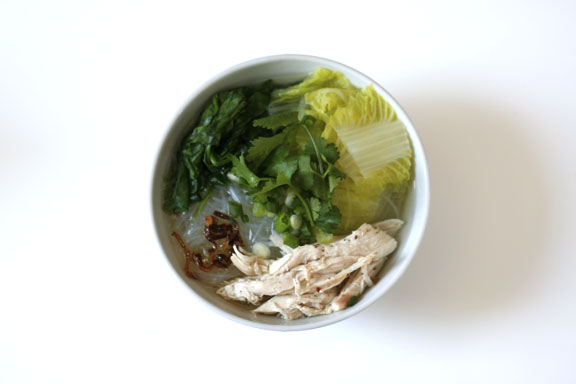


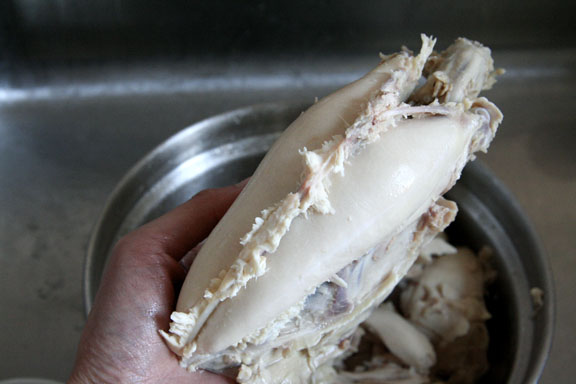









Connect with us